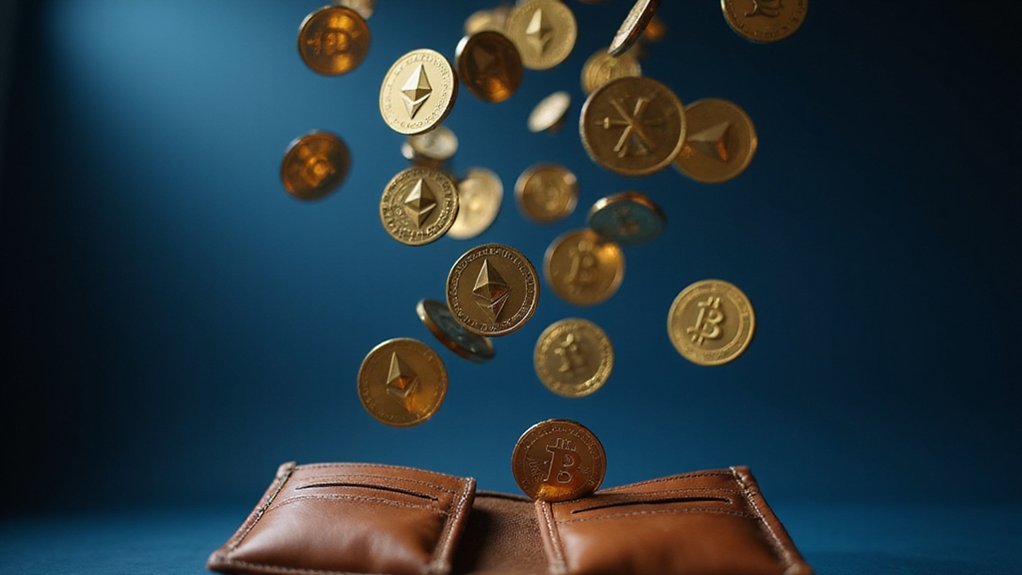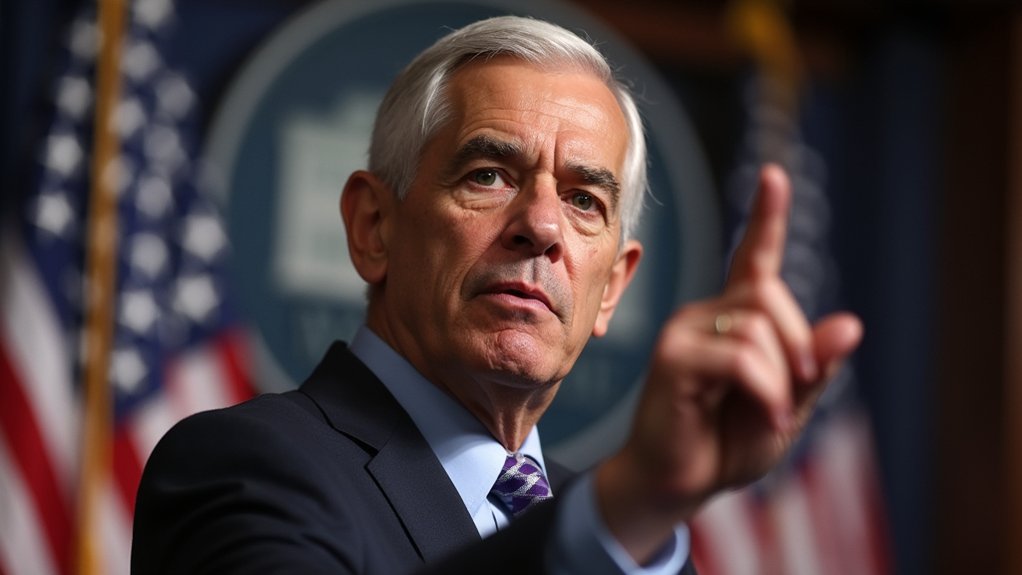Trust Wallet functions as a non-custodial mobile application that enables users to manage over 10 million cryptocurrency assets across 100+ blockchain networks while maintaining complete control of their private keys—a rejuvenating departure from the custodial oversight that traditional exchanges seem so fond of imposing. The platform integrates DeFi protocols, NFT marketplaces, and decentralized exchanges into a unified interface, transforming what was once a fragmented ecosystem of disparate wallets into a streamlined management tool that somehow makes traversing the crypto wilderness almost civilized.

While cryptocurrency enthusiasts once faced the bewildering prospect of juggling multiple wallets across disparate blockchain networks—a digital equivalent of carrying separate purses for different currencies—Trust Wallet emerged as a unified solution that consolidates this fragmented experience into a single, non-custodial mobile application.
The wallet operates on a fundamentally decentralized principle: private keys remain encrypted and stored locally on users’ devices rather than languishing on centralized servers vulnerable to breaches. This architecture guarantees true ownership of digital assets while eliminating the custodial risks that have plagued numerous centralized exchanges (a lesson learned through spectacular collapses that need no elaboration here).
Trust Wallet’s impressive scope encompasses over 10 million crypto assets spanning more than 100 blockchain networks, supporting everything from Bitcoin and Ethereum to various token standards including ERC-20 and BEP-20. Users can manage hundreds of tokens within this singular interface, effectively rendering the multi-wallet juggling act obsolete.
Beyond mere storage, the application integrates Web3 functionality through built-in decentralized application (DApp) support. Users can interact directly with blockchain-based games, NFT marketplaces, and decentralized finance protocols without traversing external platforms—a convenience that would have seemed impossibly futuristic just years ago. These DeFi protocols enable users to engage in peer-to-peer transactions for lending, borrowing, and trading without traditional financial intermediaries.
The wallet’s integrated decentralized exchange enables direct token swaps without centralized intermediaries, while staking functionality allows users to earn passive income on supported assets. These features transform what was once a simple storage solution into a thorough portfolio management platform.
Security measures extend beyond private key encryption to include secure recovery phrases for wallet restoration and proactive alerts for potentially risky transactions. The company maintains a zero personal tracking policy, preserving user anonymity in an increasingly surveilled digital landscape. Additional security features include biometric authentication that provides an extra layer of protection for wallet access.
The mobile-first design prioritizes accessibility across iOS and Android platforms, featuring intuitive navigation that accommodates both novice users and professional traders. Multi-language support and continuous updates guarantee global usability while real-time portfolio management provides immediate visibility into asset balances and transaction history.
Trust Wallet fundamentally represents the maturation of cryptocurrency infrastructure—transforming what was once a fragmented, technically demanding ecosystem into a streamlined, user-controlled financial management tool that operates entirely within users’ direct control.
Frequently Asked Questions
Is Trust Wallet Safe From Hackers and Security Breaches?
Trust Wallet employs robust security measures—local private key encryption, biometric authentication, and proactive transaction scanning—that greatly reduce hacking risks.
However, absolute safety remains elusive in cryptocurrency’s Wild West landscape. The wallet’s non-custodial nature eliminates centralized server vulnerabilities, though user error (weak PINs, phishing susceptibility) represents the primary threat vector.
While reasonably secure against external breaches, it cannot protect users from their own lapses in digital hygiene.
What Fees Does Trust Wallet Charge for Transactions?
Trust Wallet charges no fees for wallet services or transactions—those costs stem from blockchain networks themselves.
Users pay gas fees to miners and validators (not Trust Wallet) when executing transactions, with rates varying by network congestion and blockchain type.
Ethereum transactions require ETH for gas, while Bitcoin incurs dynamic network fees.
Third-party DApp services integrated within Trust Wallet may impose separate charges, though these aren’t Trust Wallet’s fees either.
Can I Recover My Trust Wallet if I Lose My Phone?
Yes, Trust Wallet users can recover their wallets after losing their phones—provided they possess their 12-word recovery phrase.
This seed phrase serves as the master key, enabling complete wallet restoration on any new device through the official app.
Without this phrase, however, recovery becomes impossible due to Trust Wallet’s non-custodial architecture.
The process involves downloading the app, selecting wallet restoration, and entering the exact phrase sequence to regain full access.
Does Trust Wallet Work in All Countries Worldwide?
Trust Wallet operates in most countries worldwide, though regulatory frameworks create predictable complications.
While available across major markets including the US, UK, Germany, and Japan, certain jurisdictions—notably China and India—impose restrictions that limit functionality or access entirely.
The wallet’s decentralized architecture theoretically transcends borders, yet local compliance requirements and app store policies create practical barriers.
Users in restricted regions often employ VPNs, highlighting the perpetual tension between borderless technology and sovereign authority.
How Do I Transfer Cryptocurrencies From Trust Wallet to Exchanges?
Transferring cryptocurrency from Trust Wallet to exchanges requires traversing the surprisingly intricate dance of blockchain networks—one misstep and funds vanish into the digital ether.
Users must obtain the exchange’s deposit address, guarantee network compatibility (BSC versus Ethereum, naturally), paste the address into Trust Wallet’s send function, verify transaction details with surgical precision, then wait for blockchain confirmations while monitoring both platforms’ transaction histories for successful completion.









